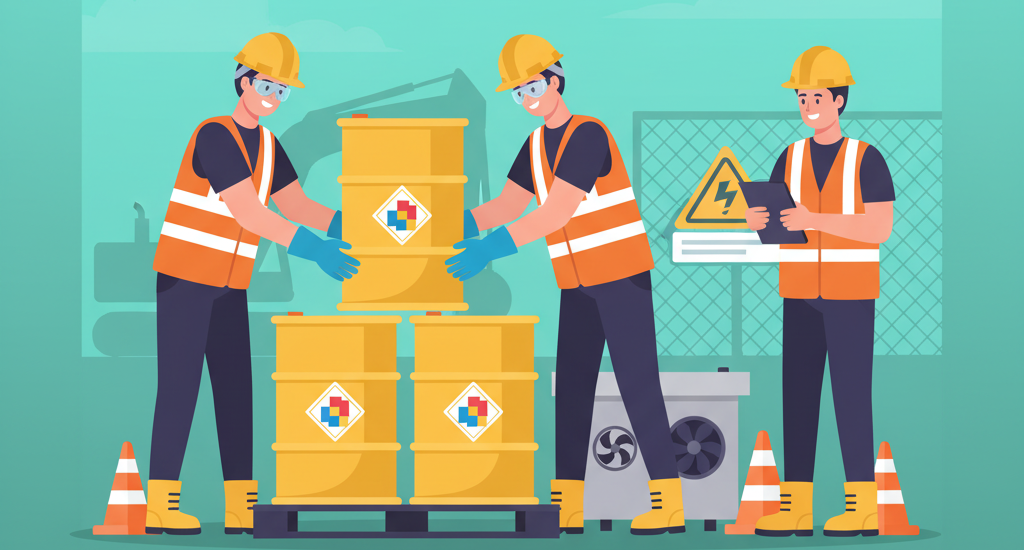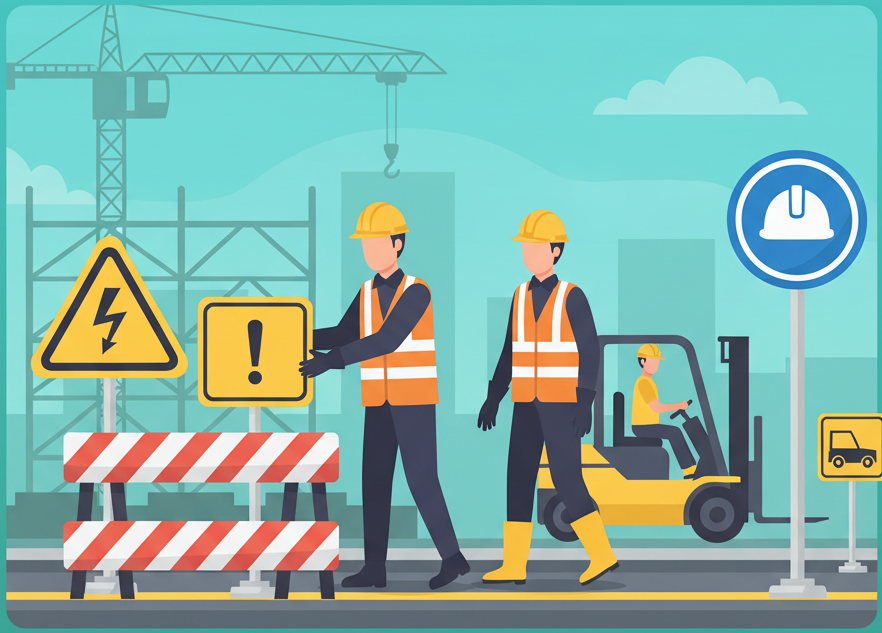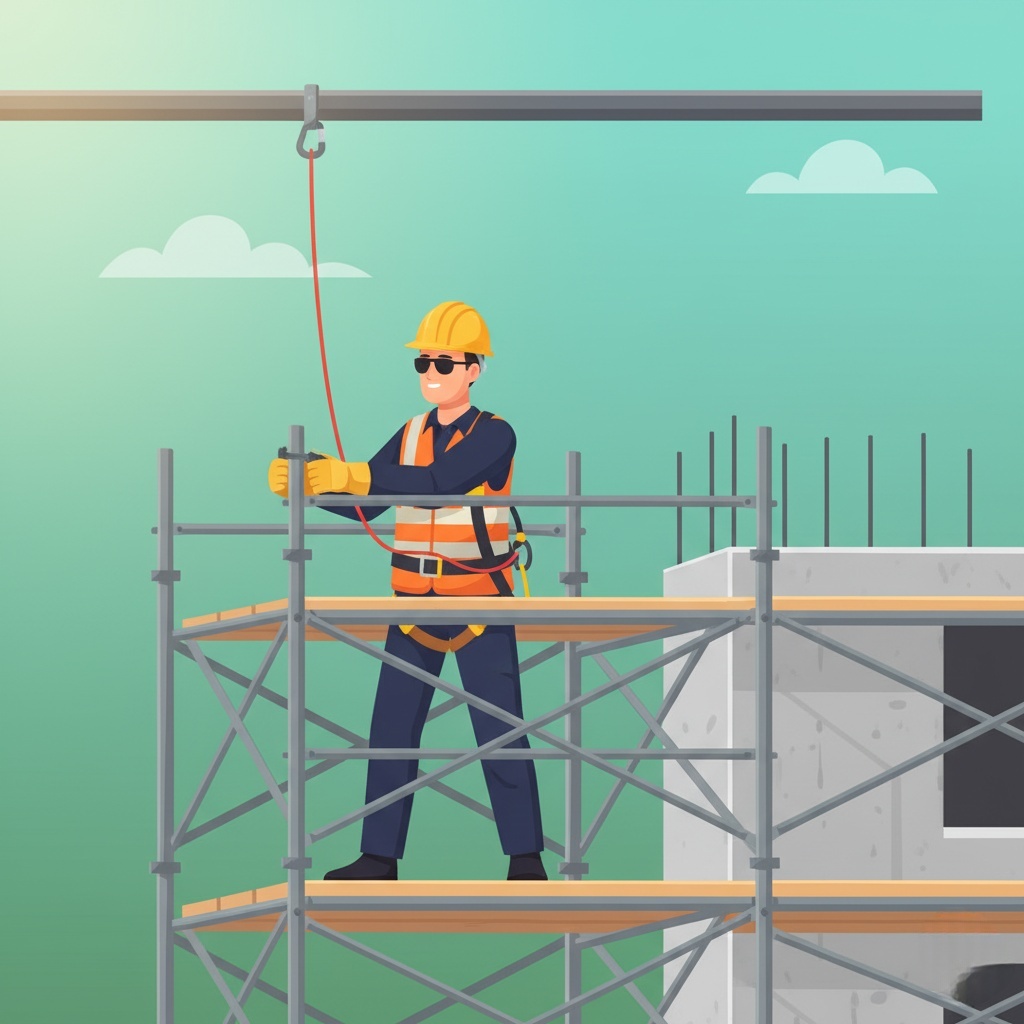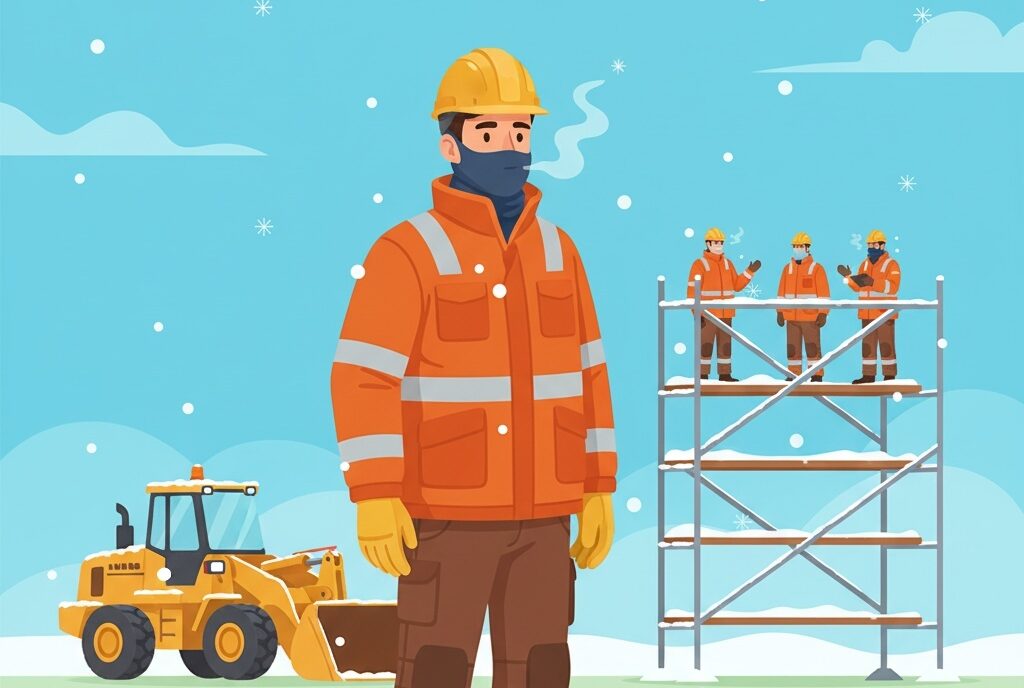Construction sites generate a lot of waste—some of it harmless, like wood scraps or packaging, and some of it far more dangerous. Hazardous waste materials such as solvents, lead-based paint, asbestos, or leftover chemicals can pose serious threats to workers, the surrounding community, and the environment if they aren’t handled correctly.
Improper management doesn’t just put people at risk—it can lead to contaminated soil and water, costly clean-up operations, and steep fines from regulatory agencies. That’s why every crew member, from supervisors to laborers, needs to understand the basics of hazardous waste management.
By identifying, handling, and disposing of hazardous waste properly, construction teams can protect both their people and their projects while staying compliant with OSHA and EPA regulations.
How to Identify Hazardous Waste
Before you can safely dispose of hazardous materials, you first need to recognize them. Not all waste is obvious—something as routine as leftover paint or cleaning solution can be classified as hazardous if it meets certain conditions.
According to OSHA and the EPA, hazardous waste falls into four main categories:
Ignitable – Easily flammable materials such as gasoline, thinners, solvents, or some oil-based paints. These can ignite from heat, sparks, or open flames.
Corrosive – Strong acids and bases that can burn skin, corrode containers, or damage equipment. Examples include sulfuric acid, hydrochloric acid, or ammonia-based cleaners.
Reactive – Chemically unstable materials that may explode or release toxic gas when mixed with water or other chemicals. Unused explosives, certain peroxides, or cyanides fall into this category.
Toxic – Substances like asbestos, lead, and mercury that can cause long-term health problems if inhaled, ingested, or absorbed.
Being able to identify these waste types ensures workers use the right storage methods and follow the proper disposal processes. On many sites, supervisors post hazard charts and signage to help crews recognize dangerous substances at a glance.

Best Practices for Handling Hazardous Waste
Once hazardous waste has been identified, it needs to be managed carefully from start to finish. Here are the core practices every construction crew should follow:
1. Label and Store It Correctly
Every hazardous waste container should be clearly labeled with its contents and the hazards it poses. Labels prevent confusion, especially on busy job sites where many substances may look similar. Containers must also:
Be made of compatible materials that won’t react with the waste.
Stay tightly sealed and leak-proof.
Be stored in a designated, ventilated area away from high-traffic zones, ignition sources, and drains.
2. Wear the Right Protective Gear
Personal protective equipment (PPE) is the first defense against exposure. Depending on the waste type, this could include:
Chemical-resistant gloves
Safety goggles or face shields
Respirators for dusts, fumes, or vapors
Protective suits or aprons
Equally important: workers must know how to properly wear and remove PPE to avoid contamination. Training sessions should include demonstrations on fit and use.
3. Follow Disposal Regulations
Hazardous waste disposal is highly regulated, and for good reason. Tossing a container of paint thinner into a dumpster doesn’t just break the law—it risks contaminating soil or groundwater.
Always use authorized hazardous waste disposal services.
Keep proper documentation and manifests for compliance checks.
Ensure waste is transported in approved containers and vehicles to licensed facilities.
4. Be Ready for Spills and Emergencies
Even with the best planning, accidents can happen. A container might leak, or a chemical could spill during transfer. That’s why every construction site should:
Have a spill response plan posted and communicated to all workers.
Keep spill kits stocked with absorbents, neutralizers, and PPE.
Train workers to act quickly—contain, control, and clean up spills while keeping themselves safe.
5. Train Your Crew on Hazardous Waste Management
Knowledge is the best safeguard. Training programs such as HAZWOPER (Hazardous Waste Operations and Emergency Response) teach workers how to identify hazardous substances, wear protective gear properly, and respond to emergencies.
Regular refresher training ensures that new hires and long-time workers alike stay up to date on the latest procedures.
Safety in Action: A Real-World Scenario
A demolition crew working on an older office building in the Midwest uncovered a batch of old paint cans stored in the basement. The labels had faded, but the strong smell suggested they contained solvents or oil-based paint.
One worker, unaware of the risks, started stacking the cans onto a pallet near a heating vent. Within minutes, the fumes became overwhelming, forcing the team to evacuate. Luckily, a supervisor recognized the potential hazard. The area was cordoned off, the cans were moved to a ventilated space, and a hazardous waste contractor was called in for safe removal.
The incident became a teaching moment. The company implemented stricter waste identification protocols and required additional HAZWOPER training. What could have been a major health crisis turned into an important lesson: never assume waste is harmless just because it looks old or forgotten.
Stay Safe, Stay Compliant
Managing hazardous waste isn’t just about checking boxes on a compliance form—it’s about protecting your crew, your community, and the environment. Every container handled correctly, every spill prevented, and every worker trained reduces the risk of accidents.
By following these best practices, you can:
Prevent injuries and long-term health problems.
Avoid costly fines and project delays.
Build a stronger culture of safety on-site.
If your team needs additional training, consider enrolling in our HAZWOPER 40-Hour Course. It’s one of the most effective ways to ensure your crew knows how to manage hazardous waste safely and stay compliant. Sign up today to keep your job site safer and your workers protected.
FAQs
1. What should I do if I find unmarked hazardous waste on-site?
Report it to the site supervisor immediately. Never handle unknown substances without proper PPE and identification procedures.
2. Can hazardous waste go in regular trash bins?
No. Hazardous waste must be disposed of according to OSHA and EPA regulations. Always use designated disposal services and keep proper documentation.
3. Why is hazardous waste training important for construction workers?
Proper training minimizes the risk of exposure to dangerous substances, helps prevent accidents, and ensures compliance with safety regulations.













